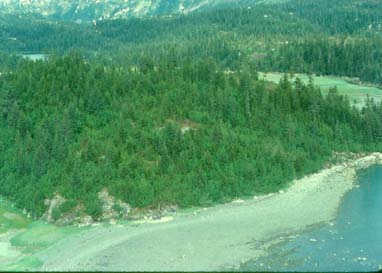| 3. This bedrock knob
is directly west of the lagoon mouth spit and was partially covered by
ice during the 1840s to 1880s maximum stand of Nellie Juan Glacier.
The line of tall trees (slightly darker green) along the crest of the knob
are growing on the terminal moraine, while smaller trees and shrubs have
colonized the deglaciated side of the knob in the foreground. |
 |